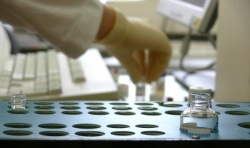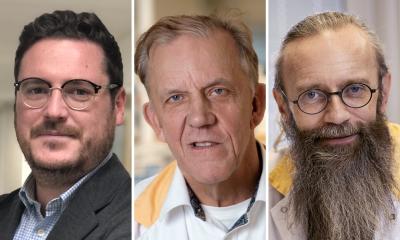Small device counts viruses in minutes
The machine 'qViro' which is the size of a coffee grinder will make virus counting much cheaper than traditional virus counting technology. The revolutionary new invention offers the potential to quickly muster and count the number of viruses in a sample in minutes - it is a portable, desktop instrument, powered from the USB drive of a computer - current competitors are the size of washing machines, take days to get a result, or cost upwards of $50,000

The machine 'qViro' which is the size of a coffee grinder will make virus counting much cheaper than traditional virus counting technology. The revolutionary new invention offers the potential to quickly muster and count the number of viruses in a sample in minutes - it is a portable, desktop instrument, powered from the USB drive of a computer - current competitors are the size of washing machines, take days to get a result, or cost upwards of $50,000.
Due for commercial release in April 2009, qViro is expected to cost about $10,000 and according to Paul Atkins, Australo's Director of External Relations, the technology will be available to every researcher who needs it.
The device measures single biological molecules by pulling them through a small adjustable hole or nanopore - just a few millionths of a millimetre wide - as each molecule passes through it temporarily blocks the hole and changes the electrical environment.
Australo's instruments are able to measure these changes and profile each molecule as it passes through using a process called scanning ion occlusion spectroscopy or SIOS.
Atkins says it is the adjustability of the hole that makes Australo's technology unique as it can be adjusted to count the number of particles of a particular size range and these may be HIV or avian flu virus particles in a sample.
He says because results are achieved in minutes, there is the potential to rapidly measure the viral load in a sample such as looking at the effect of anti-viral drugs on the viral load to better manage the drug regime, or get the dose right - a key issue for drug resistance especially with the complex and potentially toxic drugs used to fight HIV.
Another potential application of qViro is in the detection and measuring of viruses in, for example, fish farms - giving rapid warning of health issues.
Viruses are just one kind of 'nanoparticle' and another version of the device - qNano - will be able to detect a wider range of nanoparticles - such as airborne pollutants.
Atkins says micron-scale particles in car and truck exhausts can affect the lungs and there are clearly a number of other potentially dangerous nanoparticles which qNano is being developed to detect and quantify - quickly and relatively cheaply.
The new technology was featured in Ausbiotech - the national biotechnology conference - that was held in Melbourne on 28th October 2008.
11.11.2008











